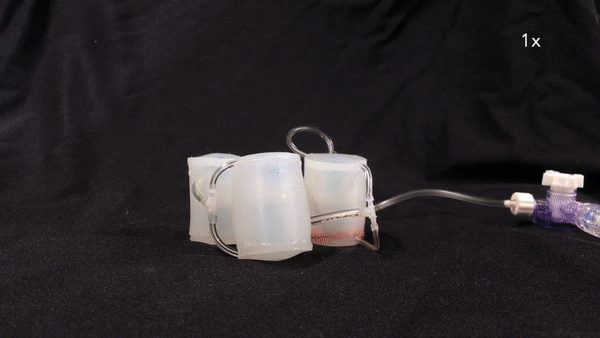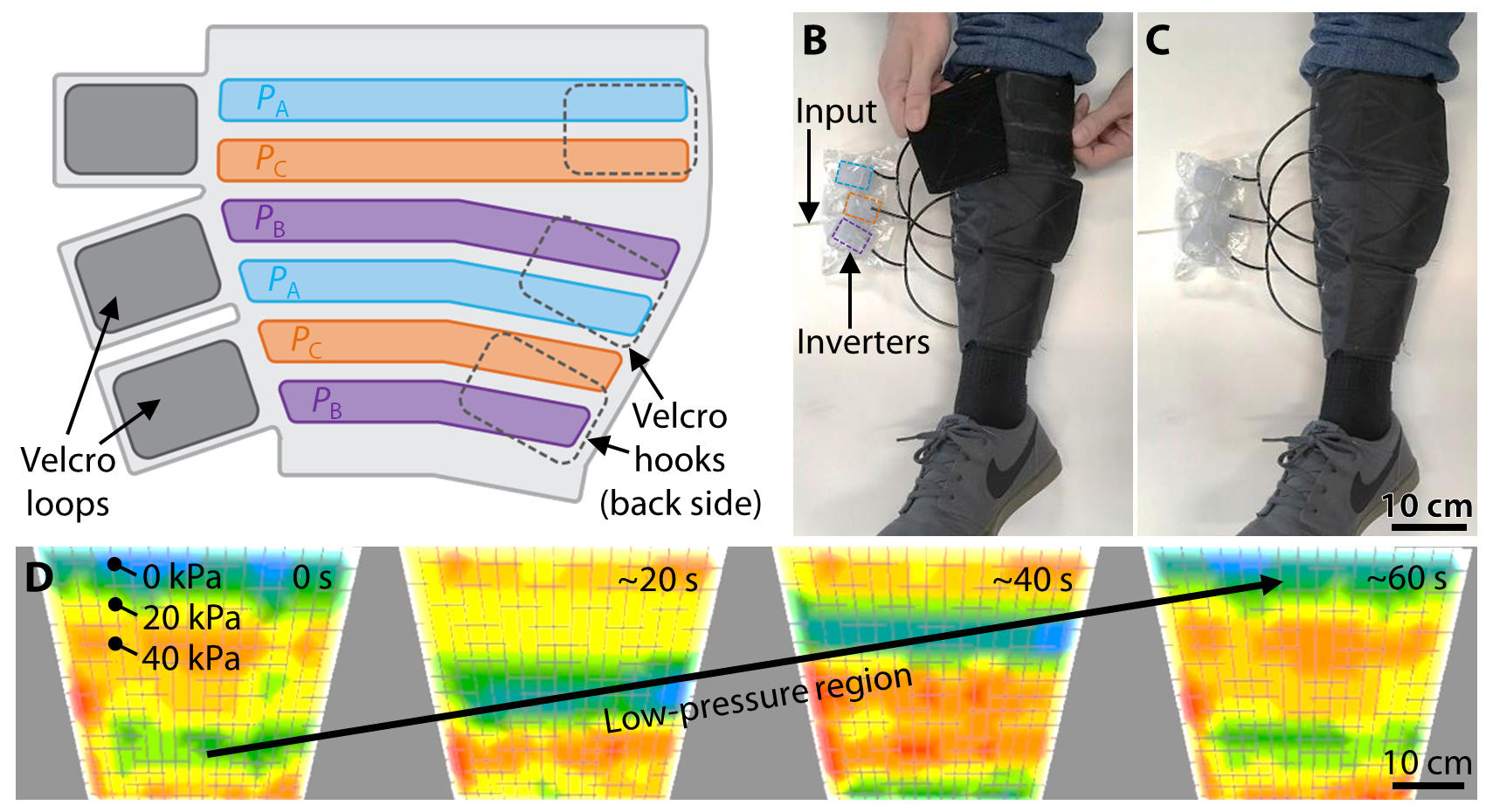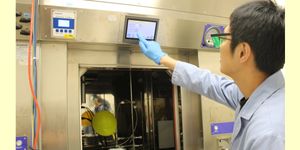Soft Robots for Everyone
Soft robots are unique—they can dominate assembly lines, perform backflips, dance to the latest pop music video, and even walk through volcanoes. Each year, soft robots acquire new skills making them hard to compete with hard robots. For one, they can handle items with care and without fear of damage. For example, they can hold a tomato without bruising the fruit. Soft robots hold a “cooperative function”—a soft touch.
Most recently, researchers worked on advancing soft robots by utilizing soft replacements instead of hard parts needed to build a robot and instead of electricity, they used pressurized air expands and contracts rubber inflatables. 
Harvard University: (Left) The soft ring oscillator shows its resiliency in a high-strain deformation test. (Right) The soft ring oscillator converts a constant input pressure to multiple temporally-coordinated oscillating outputs. Credit: D.J. Preston, H.J. Jiang, V. Sanchez, P. Rothemund, J. Rawson, M.P. Nemitz, W.K. Lee, Z. Suo, C.J. Walsh, and G.M. Whitesides
“It’s another tool in the toolkit to make these smart, soft robots without any electronics, and without any hard valves,” says postdoctoral scholar Daniel J. Preston who worked on the latest soft robot invention and introduced the soft ring oscillator.
Traditionally, ring oscillators were composed of electronic transistors or microfluidics, which require hard components. However, soft ring oscillator depends on inverters (“NOT” digital logic gates) which manipulates air pressure. “The cool response that you get when you combine an odd number of these inverters in a loop is an instability that travels around the loop,” Preston says.
Harvard University: A soft ring oscillator inflates and deflates balloons in perfect synchronicity, nudging a foam robot to roll forward. Video Credit: D.J. Preston, H.J. Jiang, V. Sanchez, P. Rothemund, J. Rawson, M.P. Nemitz, W.K. Lee, Z. Suo, C.J. Walsh, and G.M. Whitesides
Harvard University; The soft-ring oscillator will give soft robots an edge in newer abilities such as rolling, undulating, sorting, and swallowing. “People can use the soft ring oscillator for a lot of different applications in soft robotics, some of which we may not have even thought of or envisioned yet.”
For example, recent studies have shown that the pumping motion can improve symptoms of lymphedema and chronic venous disease more effectively than simple compression. The device may help individuals who work on their feet for long hours avoid deep vein thrombosis.
Harvard University: A soft mechanotherapy device for the lower leg sequentially contracts around a human user's leg, "pumping" fluid up. The device could be used to treat conditions like lymphedema and chronic venous disease and to prevent deep vein thrombosis. Credit: Daniel Preston, Harvard University
Findings of the study were published in Science Robotics.
Source: Harvard University










